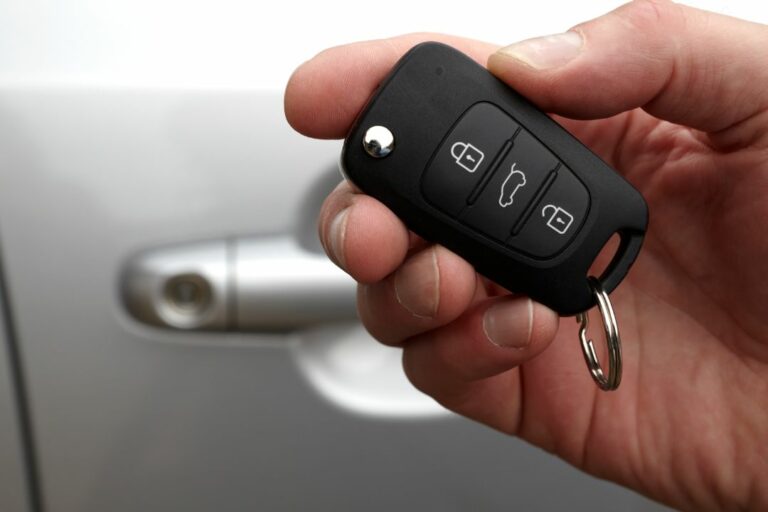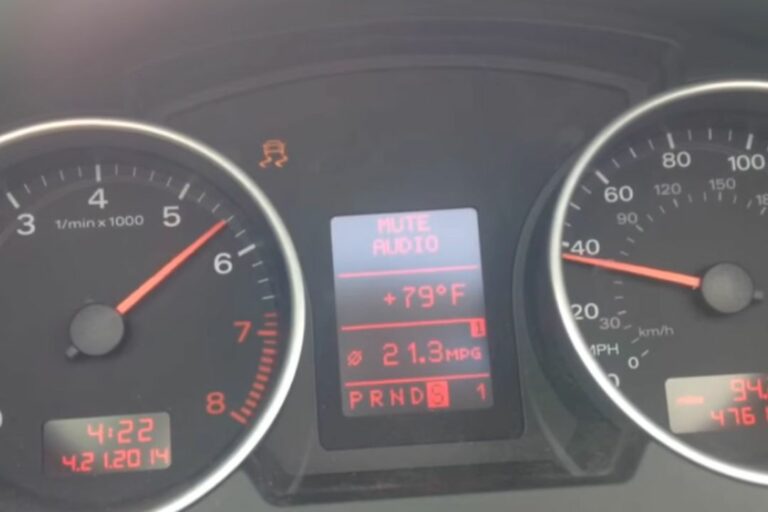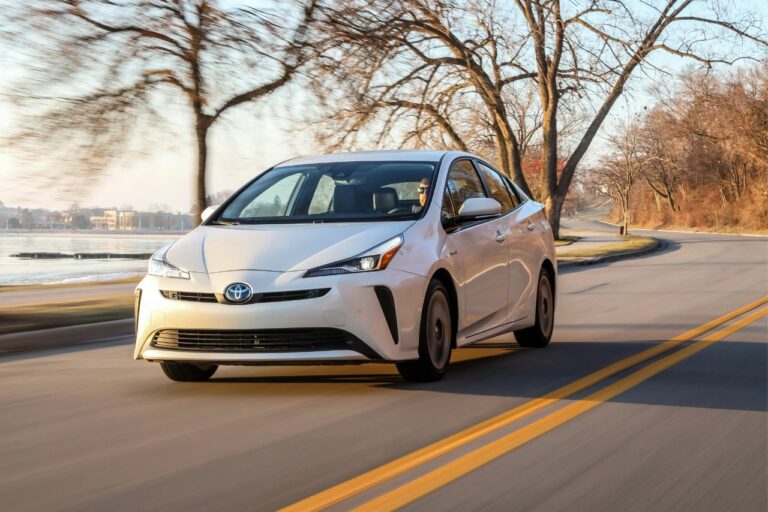How Do Journalists Get Press Cars? (Discover Their Secret!)

Are you a journalist who’s always wondered how your colleagues get to test drive the latest cars before they’re even released to the public?
Press cars are a crucial tool for automotive journalists to evaluate new models and provide their readers with insightful reviews.
How Do Journalists Get Press Cars?
Journalists can get press cars through various means, including contacting the automaker’s press office or local dealership, attending media events or press launches, or working with a fleet management company. The process typically involves providing credentials and proof of insurance, as well as agreeing to specific terms and conditions set by the automaker or dealership. Press cars are typically loaned out for a limited period of time, ranging from a few days to a few weeks.
But, how exactly do journalists get access to these coveted vehicles?
In this article, we’ll walk you through the steps that journalists typically take to request and receive press cars.
From establishing your credibility to maintaining a professional relationship with automakers, we’ll provide you with a comprehensive guide on how to get behind the wheel of the latest and greatest cars for your next review.
So if you’re ready to take your automotive journalism career to the next level, read on to find out how you can get your hands on press cars.
Establish Your Credibility:
If you wanna get your hands on a press car, you gotta prove to the automakers that you’re a legit journalist.
Building rapport with car manufacturers is essential if you want to establish your credibility as a journalist.
Attend car shows, conferences, and media events to meet the representatives of different automakers and build relationships with them.
Share your ideas and insights about the industry, and showcase your expertise in the field.
To further demonstrate your credibility, create a portfolio of your work that showcases your writing skills and your knowledge of the automotive industry.
This portfolio should include articles, reviews, and other pieces you’ve written about cars.
Share your portfolio with the automakers you’re interested in working with, and emphasize the quality and diversity of your work.
By building rapport and showcasing your expertise, you can establish yourself as a trustworthy journalist and increase your chances of getting access to press cars.
Research the Automakers:
Exploring the different automakers can be a fascinating way to understand how journalists are able to test drive new vehicles.
Each automaker has its own marketing tactics and relationships with dealers, which can affect how they provide press cars to journalists.
Some automakers have a dedicated press fleet that can be reserved for journalists to test drive and review, while others may rely on dealers to provide press cars for journalists.
Researching the automakers can also help journalists understand the different models and features that are available.
This knowledge can be useful when requesting a specific press car for review.
Additionally, understanding the marketing tactics of each automaker can help journalists tailor their reviews to the intended audience.
Overall, a deep understanding of the automakers and their relationships with dealers is crucial for journalists to successfully obtain press cars for review.
Make Your Request:
Once familiar with the automakers, it’s essential to make a compelling request for a specific vehicle to test drive, tailoring the request to the intended audience.
This means that you should know what type of publication you’re writing for, whether it’s a tech blog, lifestyle magazine, or automotive publication.
You need to clarify your goals and intentions for the review, including what aspects of the car you want to focus on, such as performance, safety, or user experience.
Additionally, it’s important to negotiate terms with the automaker, such as the duration of the loan, mileage limits, and any other requirements they may have.
Building relationships with automakers can also increase your chances of getting access to press cars.
Attend industry events, such as auto shows and press events, and introduce yourself to the representatives from various automakers.
Be professional, courteous, and respectful, and demonstrate your knowledge and expertise in the automotive industry.
Over time, as you establish trust and credibility with these representatives, you may find that it becomes easier to request and obtain press cars for test drives and reviews.
Remember, however, that building relationships takes time and effort, so be patient and persistent in your efforts.
| Negotiating Terms | Building Relationships | Tailoring Requests | |
|---|---|---|---|
| Clarify goals and intentions | Attend industry events | Know your audience | |
| Negotiate duration and mileage | Demonstrate knowledge and expertise | Focus on specific aspects | |
| Meet any requirements | Be professional and respectful | Be clear and concise | …when communicating your requests. |
Wait for Approval:
Waiting for approval can be a nerve-wracking experience, but it’s an important step in the process of obtaining a test drive vehicle.
Here are some tips for following up on press car requests and avoiding common mistakes:
- Be patient. Press car coordinators are busy people and may take some time to respond to your request. Avoid bombarding them with multiple messages or phone calls.
- Follow up after a week or two. A polite email or phone call can help remind the coordinator of your request and show your continued interest.
- Be specific about your needs. Make sure to provide details about your publication, audience, and your plans for the test drive in your initial request.
- Avoid making unrealistic or unreasonable requests. Be realistic about the type of vehicle you are requesting and the timing of your test drive.
Remember, press car coordinators are looking for journalists who are professional, reliable, and respectful of their time and resources. By following these tips, you can increase your chances of getting approval for a press car and build a positive relationship with the coordinator.
Arrange for Pickup:
Now that your request for a press car has been approved, it’s time to arrange for pickup.
The first step is to confirm the date and time with the dealership or manufacturer.
Be sure to provide your driver’s license and insurance information beforehand to ensure a smooth transaction.
Confirm the Date and Time:
Make sure to double-check the date and time of your scheduled pickup for the press car.
This is important to avoid any scheduling conflicts or rescheduling requests that may arise.
Journalists often have a tight schedule, so it’s crucial to confirm the date and time to ensure that you can make the most out of your time with the press car.
Once you’ve confirmed the date and time, make sure to mark it on your calendar and set a reminder.
It’s also a good idea to arrive early at the pickup location to avoid any delays. Remember, press cars are in high demand, and missing your scheduled pickup time may result in losing the opportunity to test drive it.
By being punctual and double-checking the date and time, you can confidently cruise around in that shiny press car and produce a great story.
Provide Your Driver’s License and Insurance Information:
Don’t forget to bring your driver’s license and insurance information when picking up a press car – it’s a must-have! License verification and insurance coverage are the two most important requirements before you can drive a press car.
These are part of the press car policies and safety requirements set by car manufacturers and regulatory bodies.
Before you can take the keys to the press car, you need to provide proof of a valid driver’s license and insurance coverage.
The car manufacturer or dealership will need to verify your driver’s license to ensure that you are legally allowed to drive the vehicle.
Additionally, they will ask for your insurance information to ensure that you have adequate coverage in the event of an accident. These steps are important to ensure the safety of both the driver and the vehicle.
Conduct Your Review:
You can start conducting your review of the press car by taking note of its exterior and interior features.
Make sure to check its overall design, color, and body shape. Look for any scratches, dents, or damages on the car’s exterior. Don’t forget to inspect the wheels, tires, and headlights as well.
Once you’re done with the exterior, move on to the interior.
Check the car’s seats, steering wheel, dashboard, and other features.
Pay attention to the car’s technology and entertainment options, like the sound system and navigation.
Take note of any issues you may find and be sure to report them to the car company.
As a journalist, it’s essential to conduct a thorough review of the press car to build a good relationship with the car company.
Your review etiquette should be professional, objective, and detail-oriented. Be honest in your assessment and provide constructive criticism.
Remember that your review can influence the car company’s brand image, so make sure to present your findings in a clear and concise manner. By following these review etiquette guidelines, you can establish a good relationship with the car company and increase your chances of getting access to more press cars in the future.
Return the Press Car:
When it’s time to return the press car, remember to treat it with care and respect as if it’s your own personal vehicle.
The car should be in the same condition as when you received it, cleaned and with a full tank of gas. Be sure to return any accessories or documents that came with the car, such as the owner’s manual or keys.
It’s important to note that receiving compensation for your review doesn’t absolve you of legal responsibility for the press car.
Any damage or accidents that occur during your time with the car are still your responsibility, and you may be liable for any repairs or insurance claims.
As a journalist, it’s important to be responsible and respectful when borrowing a press car, not only to maintain relationships with car manufacturers and PR agencies, but also to protect yourself from any legal issues that may arise.
Maintain a Professional Relationship:
To keep a positive and productive connection, it’s vital to maintain a professional relationship with the car manufacturer and PR agency.
This relationship is not only important for securing future press car loans but also for creating networking opportunities.
Here are some tips on how to maintain a professional relationship with car manufacturers and PR agencies:
- Be timely and responsive in your communication. Responding promptly to emails and phone calls shows that you respect their time and value their request for your opinion.
- Be respectful and courteous. This may seem obvious, but being polite and friendly can go a long way in building relationships with car manufacturers and PR agencies.
- Provide honest and thoughtful feedback. Giving constructive feedback helps car manufacturers and PR agencies improve their products and campaigns, which can lead to more opportunities for you in the future.
- Attend media events and press launches. Attending these events not only gives you the opportunity to test drive new cars but also allows you to network with other journalists and industry professionals.
By practicing these tips and maintaining a professional relationship, journalists can not only secure future press car loans but also build valuable connections and networking opportunities within the industry. Communication skills and professionalism are key to building these relationships, and they can lead to exciting opportunities for journalists in the future.
Frequently Asked Questions:
Are there any special qualifications or requirements needed to request a press car?
To be eligible for a press car, you typically need to be a journalist who covers cars and has a valid driver’s license. The application process may vary depending on the manufacturer or publication, but generally involves filling out a request form and providing proof of insurance.
Can journalists request a specific model or type of car for review?
Yes, journalists can request a specific model or type of car for review. Customization options and brand preferences can be discussed with the car manufacturer’s press office. However, availability may vary depending on demand and availability.
How long is the typical waiting period for a press car request to be approved?
As a prospective journalist, the approval time for a press car request can vary depending on the availability of the desired model and the publication’s relationship with the automaker. It can range from a few days to several weeks.
Are there any restrictions on where journalists can take press cars for review?
When reviewing a press car, driving restrictions and safety guidelines must be followed. Certain routes may be designated for testing, and journalists must adhere to any specific requirements set by the manufacturer or PR team.
What happens if a journalist damages a press car during their review period?
If a journalist damages a press car during their review period, they may be liable for the cost of repairs. However, most press cars are covered under insurance and liability concerns are typically addressed in advance.
Conclusion: How Do Journalists Get Press Cars?
Congratulations! You’ve successfully navigated the process of securing a press car as a journalist.
Journalists who cover the automotive industry often rely on press cars to test drive and review new vehicles.
There are several ways for journalists to get press cars, including contacting the automaker’s press office or local dealership, attending media events or press launches, or working with a fleet management company.
The process typically involves providing credentials and proof of insurance, as well as agreeing to specific terms and conditions set by the automaker or dealership.
Press cars are typically loaned out for a limited period of time, ranging from a few days to a few weeks, and journalists are expected to return the car in the same condition it was received.
This allows journalists to provide their readers with valuable insights and reviews of the latest vehicles on the market.
Good luck and happy driving!






